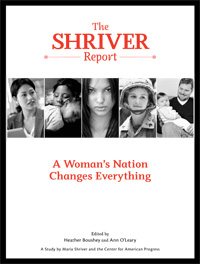A survey of more than 1,200 primary care physicians indicates that many are not following clinical practice guidelines on recommended screening intervals for cervical cancer, both with regard to traditional Pap testing as well as a newer screening method, a DNA test for the human papillomavirus (HPV). The FDA has approved HPV DNA testing for use in conjunction with Pap testing, a process called co-testing, for women age 30 and older.
At the time the survey was conducted, guidelines from the American Cancer Society and those from the American Congress of Obstetricians and Gynecologists advised extending the interval between screenings to 3 years for low-risk women over the age of 30 after three consecutive normal Pap tests or a single normal co-test (a normal Pap test plus a negative HPV DNA test). Guidelines from the U.S. Preventive Services Task Force also are consistent with a longer interval between screening tests.
In the survey, based on a hypothetical clinical vignette of a 35-year-old, low-risk woman with three prior normal Pap tests, only 32 percent of respondents reported that they would comply with guideline recommendations, researchers from the CDC and NCI reported in the June 14 Archives of Internal Medicine. Even fewer respondents, 19 percent, would comply when, during a single visit, the low-risk woman had a normal co-test result. Approximately 60 percent of those surveyed—which included general internal medicine physicians, family practice doctors, and obstetrician-gynecologists—said they would still recommend that the woman undergo annual Pap screening.
Although the Pap test is the most commonly used cervical cancer screening method, a number of studies have shown that the DNA test for HPV—the cause of the vast majority of cervical cancer cases—is more sensitive than the Pap test in detecting high-grade precancerous lesions, spurring discusions about the optimal approach to cervical cancer screening in the United States.
This new study, however, suggests that guidelines for extending screening intervals have not influenced current clinical practice, wrote Dr. Mona Saraiya of the CDC’s Division of Cancer Prevention and Control and her colleagues. “When offered the choice for HPV testing,” they wrote, “many physicians deferred to the same pattern they used for Pap testing,” annual screening with both tests or no recommendation for HPV testing.
“These practice patterns are not likely to lead to much improvement in cervical cancer outcomes, but may result in unnecessary follow-up testing, increased risk of colposcopy-associated morbidities, and distress for patients,” said Dr. Robin Yabroff, a study co-author from NCI’s Division of Cancer Control and Population Sciences.
“New HPV infections are extremely common but overwhelmingly benign; they almost always go away by themselves,” said Dr. Mark Schiffman of NCI’sDivision of Cancer Epidemiology and Genetics. “Only persistent infections are a risk factor for cancer. If you screen for HPV too often, you will detect new infections rather than persistent infections, and this poses the risk of overtreatment.”


 Several Northwestern researchers, including our own
Several Northwestern researchers, including our own 


